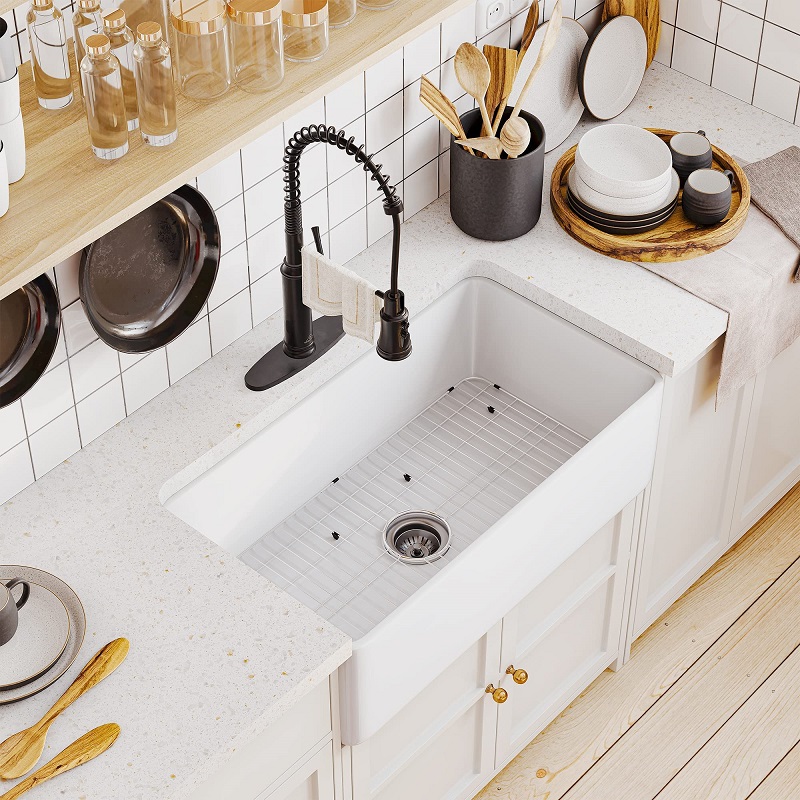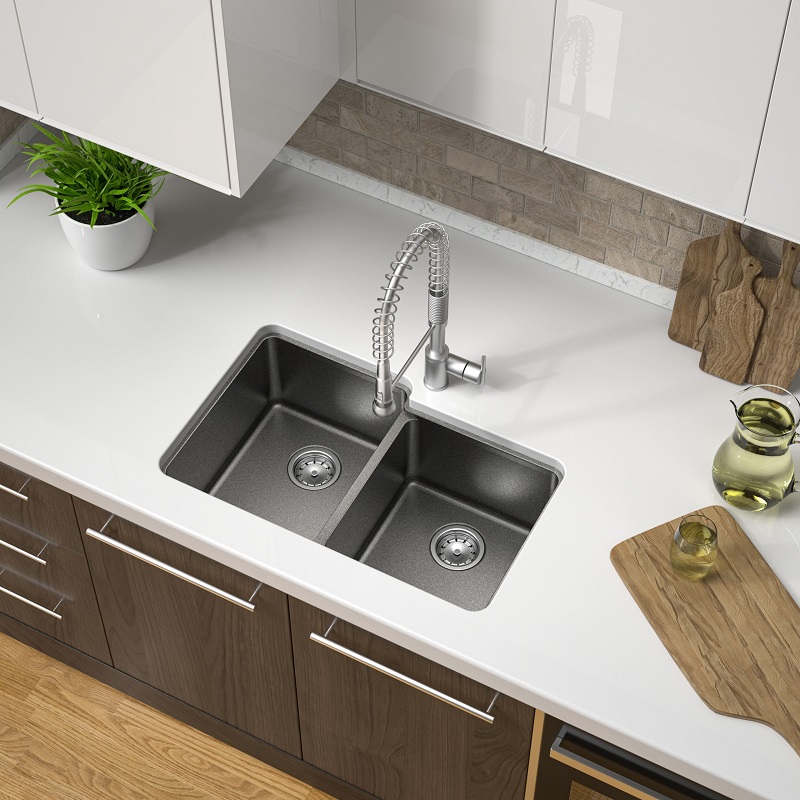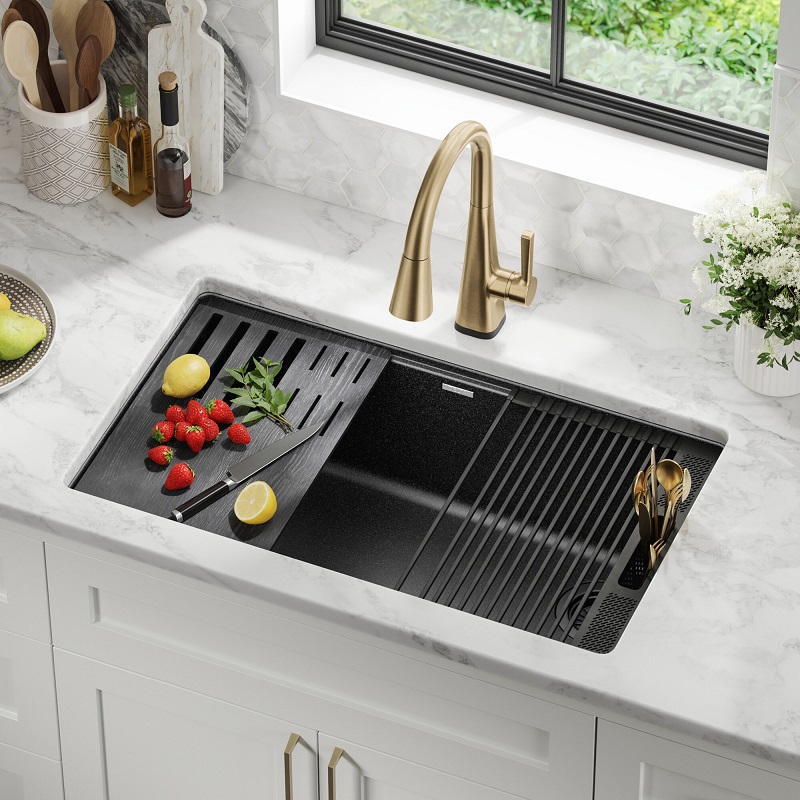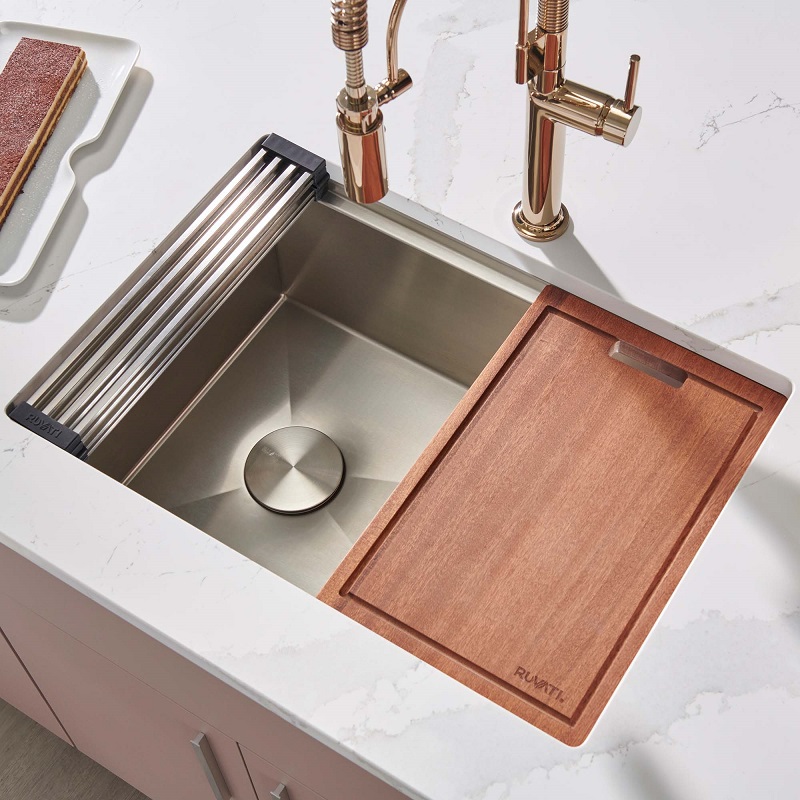When designing or renovating a kitchen, one of the most crucial decisions you’ll face is selecting the right sink. The kitchen sink not only serves a functional purpose but also plays a significant role in the overall aesthetic of the space. With various styles, materials, and features available, understanding your options is essential to find the perfect fit for your kitchen. In this article, we will explore different types of kitchen sinks, their advantages and disadvantages, and how to choose the best one for your needs.
Understanding Different Types of Kitchen Sinks
Top-Mount vs. Under-Mount Sinks
One of the first decisions you’ll need to make is whether to choose a top-mount or under-mount sink. Top-mount sinks, also known as drop-in sinks, are installed from above the countertop. This setup makes them easier to install and replace because they require less precision during installation. However, the rim can accumulate grime and food particles, which may require more frequent cleaning.
Single Bowl vs. Double Bowl Sinks
Another critical aspect of kitchen sinks is whether to opt for a single bowl or a double bowl design. Single bowl sinks offer a spacious area for washing large pots and pans, making them an excellent choice for avid cooks. Their simple design also provides flexibility in terms of usage, allowing for various tasks such as soaking dishes or preparing food.
Conversely, double bowl sinks feature two separate basins, which can be beneficial when handling multiple tasks simultaneously. For instance, one bowl can be designated for washing while the other can be used for rinsing or food prep. This separation can enhance efficiency in the kitchen, especially during meal preparation. However, double bowl sinks may occupy more counter space and reduce the size of each basin, which could be a drawback for those who frequently wash large items.

Materials Matter: Choosing the Right Sink Material
Stainless Steel Sinks
Stainless steel sinks are one of the most popular choices among homeowners due to their durability and modern appearance. They are resistant to rust, stains, and heat, making them ideal for a busy kitchen environment. Stainless steel sinks come in various finishes, from brushed to polished, allowing you to select one that complements your kitchen’s style.
Composite Sinks
Composite sinks, made from a blend of acrylic and resin or granite and acrylic, offer a unique alternative to traditional materials. These sinks are available in various colors and finishes, providing versatility in design. One of the significant advantages of composite sinks is their resistance to scratching, staining, and chipping. They also tend to have a slightly warmer feel compared to metal sinks, which adds a layer of comfort during use.
Nevertheless, composite sinks can be more expensive than stainless steel options and may require special cleaning products to maintain their appearance. Some homeowners also find that darker-colored composite sinks can show water spots and mineral deposits more readily, necessitating regular upkeep to keep them looking pristine.
Size and Configuration: Finding the Right Fit
Measuring Your Space
Before purchasing a kitchen sink, it’s vital to accurately measure the space where it will be installed. Consider both the dimensions of the sink and the surrounding cabinetry. A proper fit ensures that the sink doesn’t overwhelm or underwhelm the kitchen’s layout. Take into account the depth of the sink, as deeper sinks can provide more capacity but may require adjustments to plumbing.
Sink Depth and Capacity
The depth of your kitchen sink significantly impacts its functionality. Shallow sinks may be more comfortable for washing hands and small dishes, but they can become impractical for larger pots and pans. Conversely, deep sinks allow for more versatility in washing larger items, but they can be challenging for shorter individuals to reach into comfortably.
Capacity is another consideration, particularly for families or those who frequently cook large meals. A larger sink can accommodate more dishes, reducing the frequency of emptying and filling the sink. However, ensure that the increase in size doesn’t compromise the flow of the kitchen or make it feel cramped. Balancing depth and capacity with your specific needs and kitchen layout is essential for finding the perfect fit.

Faucet Compatibility: Ensuring Functional Harmony
Matching Faucets with Sinks
When selecting a kitchen sink, it’s essential to consider the type of faucet you plan to use. Some sinks come with pre-drilled holes for faucets, while others may require additional installation. Ensure that the faucet style complements the sink’s design to create a cohesive look in your kitchen.
You’ll also want to think about the type of faucet that best suits your cooking and cleaning habits. Pull-down faucets are popular for their versatility, allowing you to maneuver the spray head for rinsing dishes or washing vegetables. Single-handle faucets provide ease of use, especially when your hands are full. Consider your daily routines and choose a faucet that enhances the functionality of your sink.
Water Pressure and Flow Rate
Beyond aesthetics, consider the water pressure and flow rate when selecting a faucet. A sink with a high flow rate can significantly reduce the time spent washing dishes or filling pots, enhancing efficiency in the kitchen. However, some faucets may restrict flow to promote water savings, so ensure that your chosen faucet meets your needs for daily tasks.
Style and Design: Complementing Your Kitchen Aesthetic
Classic vs. Modern Designs
The style of your kitchen sink should align with the overall aesthetic of your kitchen. Classic designs, such as farmhouse sinks, offer a timeless appeal and can serve as a striking focal point in your kitchen. These sinks often feature deep basins and visible front panels, making them ideal for traditional or rustic kitchens.
In contrast, modern designs prioritize sleek lines and minimalism. Under-mount sinks or those with rounded edges can add a contemporary touch to your space. When choosing a style, consider how the sink will integrate with other elements in your kitchen, including cabinets, countertops, and appliances.
Color and Finish Options
In addition to style, the color and finish of your sink are vital for achieving a cohesive look. Stainless steel sinks remain popular for their versatility and ability to match various kitchen styles. However, colored sinks, such as black or white composite models, can add personality to your kitchen.
Consider the overall color scheme of your kitchen when selecting a sink. A contrasting color can create a bold statement, while a sink that blends with the countertops can provide a seamless look. Finishes, such as matte or glossy, also play a role in the visual impact of your kitchen sink. Choose finishes that are both aesthetically pleasing and practical for everyday use.
Maintenance and Care: Keeping Your Sink Pristine
Routine Cleaning Practices
Regardless of the material you choose, maintaining your kitchen sink is crucial for longevity and hygiene. Regular cleaning helps prevent stains, odors, and bacteria buildup. For stainless steel sinks, a gentle cleanser and soft cloth are usually sufficient. Avoid abrasive cleaners, as they can scratch the surface and diminish its shine.
Composite sinks may require specific cleaning agents to retain their color and finish. Always refer to the manufacturer’s guidelines to ensure you’re using the right products. For all sink types, promptly wipe up spills and food debris to prevent staining and buildup.
Long-Term Maintenance Tips
In addition to routine cleaning, consider long-term maintenance practices for your sink. For example, applying a protective wax coating can help maintain the finish of stainless steel sinks and prevent water spots. For composite sinks, avoid placing hot pots directly on the surface, as extreme temperatures can damage the material.
Regularly check for leaks or signs of wear, particularly around the faucet and drain areas. Addressing minor issues early can prevent costly repairs down the line, ensuring that your kitchen sink remains in optimal condition for years to come.

Budget Considerations: Finding the Right Sink Within Your Means
Setting a Budget for Your Sink
When embarking on a kitchen renovation or remodel, setting a budget is essential. Kitchen sinks vary widely in price based on material, brand, and features. Establishing a clear budget will help narrow down your options and prevent overspending.
Value for Money: Assessing Quality and Durability
While it’s tempting to opt for lower-priced options, investing in a high-quality sink can offer better long-term value. Examine the warranty offered by manufacturers, as this can indicate the quality and durability of the product. A well-made sink may have a higher upfront cost but could save you money on replacements and repairs in the future.
Research customer reviews and seek recommendations from friends or family to identify reliable brands and models. Prioritizing quality over price can lead to a more satisfying purchase and a sink that will stand the test of time.
Conclusion: Making the Right Choice for Your Kitchen
Selecting the perfect kitchen sink involves careful consideration of various factors, including style, material, functionality, and budget. By understanding the differences between types of sinks and evaluating your specific needs, you can make an informed decision that enhances both the function and aesthetic of your kitchen.

